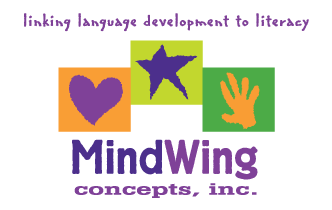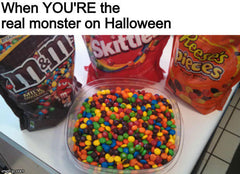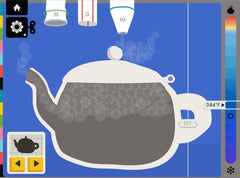Secure Checkout + FREE SHIPPING (U.S. Orders over $60)
Menu
-
- Home
-
About Us
-
The Approach
-
Linking Language & Literacy
-
Professional Learning
-
Learning Resources
-
SHOP
-
Blog
-
- About MindWing
- Our People
- Contact Us
- Your Account
- Login
-
United States (USD $)

Secure Checkout + FREE SHIPPING (U.S. Orders over $60)
Tech Tuesday: Basics of Using MindWing’s Digital Icons
April 20, 2020
MindWing has made its digital icons available at low cost to assist us as we are providing distance learning and teletherapy during this COVID-19 crisis (surely one of the biggest common kick-offs we have experienced). In this post, I’ll be outlining some what-tos and how-tos with the icons; if you’d like a longer visual overview, I recorded a webinar (Intersecting Story Grammar Marker® with Technology and Telepractice: Distance Learning During this COVID-19 Crisis and Beyond) with Maryellen on April 1, 2020 and the recording is available for free on the site. The Digital Icons downloadable is a PowerPoint (PPT) file that can also be opened in Apple (Mac)’s free Keynote application or uploaded to Google Drive and opened with Google Slides. PPT files open automatically in Keynote, but let’s tackle that Google part first...

Tech Tuesday: Telling Tales at Varying Developmental Levels
February 03, 2020
 The practice of providing model narratives in order to scaffold personal narratives from students is one that is supported in our literature. Pamela Hadley (1998) describes conversational mapping, or “give a story to get a story,” as critical in language sampling, and these principles can be extended to intervention activities. Westby and Culatta (2016) suggest similar procedures: “Clinicians can model the telling of event narratives and ask children to relate their own experience about a similar event. One clinician told of a time when she did not close the door on her hamster's cage, and the hamster escaped and was never found. The telling of that experience elicited a child's story about a time when he had pet crickets in a cricket cage and the family cat got into the cage and ate the crickets.” We should remember that not every model needs to be a complete episode, though I realized after a recent trip to Utah’s National Parks that I had one ready-to-go. Additionally, this model also demonstrates the synchrony between Story Grammar Marker® and Zones of Regulation®.
The practice of providing model narratives in order to scaffold personal narratives from students is one that is supported in our literature. Pamela Hadley (1998) describes conversational mapping, or “give a story to get a story,” as critical in language sampling, and these principles can be extended to intervention activities. Westby and Culatta (2016) suggest similar procedures: “Clinicians can model the telling of event narratives and ask children to relate their own experience about a similar event. One clinician told of a time when she did not close the door on her hamster's cage, and the hamster escaped and was never found. The telling of that experience elicited a child's story about a time when he had pet crickets in a cricket cage and the family cat got into the cage and ate the crickets.” We should remember that not every model needs to be a complete episode, though I realized after a recent trip to Utah’s National Parks that I had one ready-to-go. Additionally, this model also demonstrates the synchrony between Story Grammar Marker® and Zones of Regulation®.

Tech Tuesday: ASHA Convention Wrap-up, Part 1
December 10, 2019
 This year brought those of the speech-language pathologist ilk to Orlando, which I have come to think of as the land of simulated Character and Setting. Inside the more sedate but still stimulating conference halls, MindWing’s tools were shared by a number of presenters including me! In Developing Expressive Language In Preschoolers: Strategies to Increase Utterance Length and Complexity (Mentis, Howland, Graham), the authors described their integration of Braidy the StoryBraid® into a language and literacy program for preschoolers, providing graduate student clinicians with wonderful experience in targeting language in the context of stories and play. The presenters recommended a number of books used within their program, moving from emphasis on simple to more complex story grammar and microstructure...
This year brought those of the speech-language pathologist ilk to Orlando, which I have come to think of as the land of simulated Character and Setting. Inside the more sedate but still stimulating conference halls, MindWing’s tools were shared by a number of presenters including me! In Developing Expressive Language In Preschoolers: Strategies to Increase Utterance Length and Complexity (Mentis, Howland, Graham), the authors described their integration of Braidy the StoryBraid® into a language and literacy program for preschoolers, providing graduate student clinicians with wonderful experience in targeting language in the context of stories and play. The presenters recommended a number of books used within their program, moving from emphasis on simple to more complex story grammar and microstructure...

Tech Tuesday: More on Memes (Think Halloween!)
October 30, 2019
 Today’s kids really like memes, digesting them from internet spaces we are too cool to inhabit! Therefore, they serve as a textual or language-infused genre that we can exploit for our students’ engagement. Often a meme suggests some element of a narrative that serves to facilitate a discussion or mapping of other elements. We can compare and contrast these narrative forms with exposition, or explaining ideas (see Thememaker®). When critiquing narrative works such as movies, it’s always felt to be a no-no to have too much exposition, or telling (not showing), such as when a character suddenly explains the mystery inherent to a plot...
Today’s kids really like memes, digesting them from internet spaces we are too cool to inhabit! Therefore, they serve as a textual or language-infused genre that we can exploit for our students’ engagement. Often a meme suggests some element of a narrative that serves to facilitate a discussion or mapping of other elements. We can compare and contrast these narrative forms with exposition, or explaining ideas (see Thememaker®). When critiquing narrative works such as movies, it’s always felt to be a no-no to have too much exposition, or telling (not showing), such as when a character suddenly explains the mystery inherent to a plot...

Tech Tuesday/Summer Study Series: Narrative and Autism Spectrum Disorder
August 12, 2019
 I am frequently asked to conduct evaluations encompassing social cognition and pragmatic language and always find it extremely valuable to include a detailed assessment of narrative language. However, in doing so, and having reviewed previous assessments of these students, I often find that I am like a newcomer to a desert landmark, standing there saying “Hey, look at this…?” Why haven’t the examiners before me documented and then suggested interventions around these inevitably present narrative language issues?...
I am frequently asked to conduct evaluations encompassing social cognition and pragmatic language and always find it extremely valuable to include a detailed assessment of narrative language. However, in doing so, and having reviewed previous assessments of these students, I often find that I am like a newcomer to a desert landmark, standing there saying “Hey, look at this…?” Why haven’t the examiners before me documented and then suggested interventions around these inevitably present narrative language issues?...

Tech Tuesday/Summer Study Series: Because and So Science
July 15, 2019
 For July’s entry in the “Summer Study Series,” we’ll be looking at some cool connections to the science curriculum in addressing the macrostructure and microstructure of language. Our posts this summer are summarizing recent research related to narrative and expository language and Story Grammar Marker®/ThemeMaker® to give you some scientific thought for summer. To set the tone, there are some natural connections between the SGM® and ThemeMaker® methodologies and using science content with students. Narrative and expository elements give a framework for summarizing story and information, elaborating, focusing on main ideas and reducing the load on working memory by providing a scaffolded structure. The scientific method itself, moving from observation (Character/Setting), planning and hypothesizing, following experimental steps, and developing a conclusion, can be reframed using the Story Grammar Marker® as is demonstrated in the original SGM® manual...
For July’s entry in the “Summer Study Series,” we’ll be looking at some cool connections to the science curriculum in addressing the macrostructure and microstructure of language. Our posts this summer are summarizing recent research related to narrative and expository language and Story Grammar Marker®/ThemeMaker® to give you some scientific thought for summer. To set the tone, there are some natural connections between the SGM® and ThemeMaker® methodologies and using science content with students. Narrative and expository elements give a framework for summarizing story and information, elaborating, focusing on main ideas and reducing the load on working memory by providing a scaffolded structure. The scientific method itself, moving from observation (Character/Setting), planning and hypothesizing, following experimental steps, and developing a conclusion, can be reframed using the Story Grammar Marker® as is demonstrated in the original SGM® manual...
